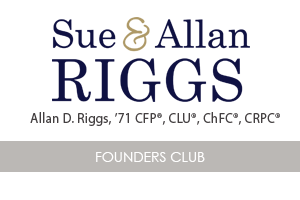We offer two enrollment options: 1) Academic Credit and 2) Extended Learning Credit. Courses in both enrollment options are taught 100% online. A select few are available through traditional classroom delivery for students currently enrolled at Texas A&M University in a degree-seeking program.
Both enrollment options are registered with the CFP Board of Standards. Students who wish to qualify for the CFP® Exam will need to complete all six courses and earn a ‘C’ or better in each course. Texas A&M University does not award the CFP® marks.
To learn more about the courses and what topics are covered, please visit the Learn more about the courses section.
Academic Credit & Minor Coursework
Starting Fall 2021, the prefix for all of our undergraduate courses changed to AGLS. If you do not see courses listed in Howdy, please double check that you are searching under the AGLS prefix.
| Spring 2022 | Summer 2022 | Fall 2022 | Spring 2023 | |
| AGLS 435 Financial Planning for Professionals | ||||
| AGLS 436 Insurance & Estate Planning | ||||
| AGLS 437 Tax Planning | ||||
| AGLS 438 Investment Planning | ||||
| AGLS 439 Retirement Planning | ||||
| AGLS 441 Financial Planning Capstone |
Academic credit is limited to students who have applied to Texas A&M University through Apply Texas and were admitted into a degree program at the university. Our Academic Credit program consists of six courses with a total of 18 credit hours.
Extended Learning Certificate Coursework
Starting Spring 2022, the prefix for all of our certificate courses is changing to FPCC. Course names, numbers, and content remain the same.
| Spring 2022 | Summer 2022 | Fall 2022 | Spring 2023 | |
| FPCC 435 Financial Planning for Professionals | ||||
| FPCC 436 Insurance & Estate Planning | ||||
| FPCC 437 Tax Planning | ||||
| FPCC 438 Investment Planning | ||||
| FPCC 439 Retirement Planning | ||||
| FPCC 441 Financial Planning Capstone |
Extended Learning Certificate Credit is available to students who do not wish to enroll in a degree seeking program. Courses taken for extended learning credit do not count towards a degree at Texas A&M and are not transferrable to an academic program.
Learn more about the courses:
435 Financial Planning for Professionals +
.
436 Insurance and Estate Planning +
.
437 Tax Planning +
.
438 Investment Planning +
.
439 Retirement Planning +
.







